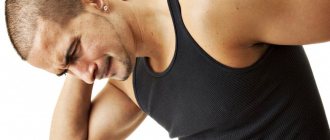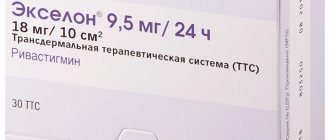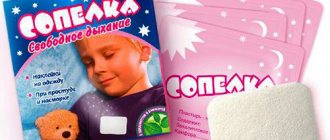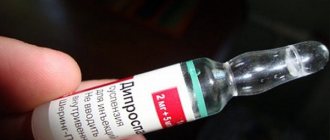A huge number of people in the modern world suffer from a disease such as osteochondrosis, that is, degenerative changes in the intervertebral discs. Moreover, the largest percentage of the occurrence of this disease occurs in the cervical spine. The causes of this condition may be heredity, injuries of various etiologies, weakened state of the back muscle tissue, curvature of the spinal column, a sedentary lifestyle, accumulation of salts in the vertebrae or lack of consumed vitamins.
The basis for the development of osteochondrosis are factors that contribute to the uneven distribution of the load on the spine, which leads to dysfunction of the intervertebral discs and subsequently to their degeneration. Such provoking factors may be regularly carrying heavy objects on one shoulder, incorrect sitting posture, sleeping on an excessively high pillow, or improperly selected shoes. In addition, obvious provocateurs of osteochondrosis are a person’s inactive life, excess weight, back and leg injuries, and impaired blood circulation in older people.
Pepper patch for cervical osteochondrosis
You can eliminate unpleasant symptoms and stop the development of osteochondrosis using various methods, one of them is pepper plaster. Let's look at how the pepper patch can help with osteochondrosis of the cervical spine and who can use it.
Release form
The product is produced in the form of a strip of fabric with or without perforation, with a uniform layer of adhesive mass on it and a specific smell. The color of the mass ranges from yellow to brownish-brown. The patch has a protective film (or paper) that must be removed before use. The size of the patch is 6 by 10 cm or 10 by 18 cm.
The drug is also sold in the form of two strips of fabric with adhesive paste, glued to each other with the front side. The medicine is in bags, in cardboard boxes, 1, 2, 4, 10, 20, 40 or 80 pieces.
Instructions for use
The use of an adhesive patch should not cause any difficulties, and yet there are instructions that must be followed to achieve the best results in the treatment:
- Pepper plaster for runny nose
Do not neglect the rules for using pepper plaster
- The skin on the back or chest must be prepared for gluing. To do this, it must be degreased; it is better to use medical alcohol or cologne.
- The protective film is removed from the patch. You can remove only the corner, apply the adhesive part of the patch to the skin, and stick it, gradually removing the entire protective surface.
- When applying the patch, it is important to avoid air tubercles; the sticker should tightly cover the part of the body.
The time to use the patch depends on the patient’s sensations. On average, adults are recommended to keep the patch on for 20 minutes to 2 days, and for pregnant women, the time is limited to 40-50 minutes. The period of use of the drug in a child is up to 30 minutes. While the sticker is on the body, water procedures are unacceptable - the medicinal mass will be washed off, and the effectiveness of the treatment will be reduced to zero.
Removing the patch from the body may be painful due to the adhesive backing. For better separation, you can follow the following scheme of actions:
To painlessly peel off the patch, you need to lubricate the skin around it with oil.
- Lubricate the skin around the place where the patch is glued with any oil.
- After a few seconds, carefully peel off the patch; the oil that has penetrated inside under the sticker will allow you to do this without difficulty.
- Remove any remaining medication from the skin using a cotton swab or napkin.
- Lubricate the skin with emollient or baby cream.
One-time use of pepper patch does not guarantee instant relief from cough. In addition, the patch cannot be the only treatment for colds, bronchitis or pneumonia. This remedy plays a supporting role in the overall treatment regimen. The average period of application of patches is 7-9 days.
Pharmacodynamics and pharmacokinetics
The action of the product is determined by the components in its composition.
Capsicum dilates blood vessels, relieves muscle tension and eliminates pain; the component also has a local distracting effect and improves tissue trophism.
Belladonna extract helps eliminate spasms, relaxes smooth muscles, dilates blood vessels, and relieves pain.
The use of Pepper Plaster can significantly reduce pain, relieve inflammation, speed up the healing process, and increase the mobility of the area it affects.
The drug acts locally and does not enter the systemic circulation.
Glue points
The use of pepper plaster can be classical or non-traditional. The product was created as a long-term warming compress, but experts have suggested other uses. The duration of application of the pad and treatment are always the same. Another place to put pepper cough patch? It is used for the following places:
- Chest, back. You can use pepper patch with a strong cough, like mustard plasters. It must be placed on the chest and back according to the instructions, after which you can expect positive changes.
- Active points on the back. Dr. Popov advises fixing the patch only on active points of the back that are responsible for the cough reflex. They, in his opinion, are located on both sides of the spine at the site of the shoulder blades or below. For each person, the area where the patch is located must be selected individually, using the palpation method, with palpation in these areas when the disease occurs.
- Points on the feet. There are also points on the legs that are responsible for the respiratory system. To enhance the effectiveness of the patch, you should also stick it on your feet.
- Phalanges of the ring fingers. A patch that is applied to the middle phalanx of the fourth finger will help eliminate the cough. And for a runny nose, you need to place the remedy on the upper phalanx. There are biologically active points responsible for the normal functioning of the respiratory system.
If you want to cure a cold in a couple of days, a pepper patch will not work. The product is necessary for long-term use. The course of treatment lasts 2-3 weeks, it all depends on the severity and neglect of the disease. But the effect of therapy is worth it, since it will be possible to recover from chronic bronchitis and old diseases of the respiratory system.
Instructions for Pepper patch (method and dosage)
The drug is used exclusively locally, externally.
Instructions for use of Pepper patch
Before use, the skin at the application site must be degreased with an alcohol-containing liquid. Then remove the protective film (or separate two strips of the patch) and stick it on the surface of the skin.
The patch can be kept on the body for up to 48 hours if there is no severe burning sensation. If unpleasant sensations, severe burning and irritation appear, then remove the product, remove the remaining plaster mass and apply baby cream or Vaseline .
When coughing, the pepper patch is placed between the shoulder blades and the spine; it is also recommended to stick it on the feet to enhance the effect and influence general strengthening points. The duration of treatment for bronchitis and tracheitis is up to 7 days.
For osteochondrosis, the canvas can be cut into small squares of 1 by 1 cm and glued to special restorative points. This is the area under the seventh cervical vertebra (if you tilt your head it protrudes), the area under the vertebra below, painful areas. You can also stick the entire sheet onto the affected areas. It is advisable to leave the drug for 5-7 days, then remove it in the usual way.
You can use Pepper Plaster for cellulite in the early stages. But it should be remembered that the effect will be much better if you simultaneously exercise and follow a diet .
To get rid of cellulite , the medicine is applied to the affected areas for 20-30 minutes, best after a shower or bath. The duration of treatment is until improvements appear. You can use the same sheet up to 3 times.
How to remove the patch painlessly?
To avoid discomfort, the canvas and nearby areas can be lubricated with vegetable or any other oil, wait a little and carefully remove. Remove the remaining patch with a clean napkin and lubricate the skin with moisturizer.
How to use pepper patch for cough
When applying a warming patch to adults and children, you must follow the recommendations specified in the instructions. Local therapy is most effective in combating nonproductive cough due to ARVI. It leads to the liquefaction of mucus, as a result of which the cough becomes productive. With timely use of the pepper patch, recovery occurs 1.5-2 times faster.
What kind of cough does it help with?
Doctors recommend using adhesive warming strips for dry coughs. By accelerating blood circulation in the lungs, the activity of secretory cells that secrete surfactant increases - a mixture of surfactants that:
- prevent the walls of the alveoli from sticking together;
- thin bronchial mucus.
A sticker with pepper extract plays the role of a mucolytic, therefore it is used to eliminate cough against the background of:
- acute and chronic bronchitis;
- tracheitis;
- pneumonia;
- tracheobronchitis;
- obstructive pulmonary disease.
Pepper adhesive plaster is effective for productive (wet) cough. Its components increase the tone of the respiratory muscles.
When you cough, the mucus accumulated in the bronchi is removed, as a result of which breathing becomes easier and shortness of breath disappears.
Heat treatment is recommended for dry and wet cough. In the first case, the liquefaction of mucus is accelerated, and in the second - its removal.
Otolaryngologists advise using patches with a local irritant effect for inflammation of the upper respiratory tract. When warming the upper chest and back, local immunity is strengthened. Therefore, the risk of inflammation of the larynx, trachea, and bronchi is reduced.
Contraindications
Before starting heat therapy, make sure there are no contraindications. Local therapy for cough and runny nose is not recommended for:
- pregnancy and lactation;
- hypersensitivity to capsaicin;
- exacerbation of skin diseases;
- varicose veins;
- oncological diseases of the ENT organs;
- elevated body temperature;
- uncontrolled hypertension;
- purulent lesions of the lower respiratory tract;
- violation of skin integrity;
- aspirin-induced bronchial asthma;
- decreased blood clotting.
Cough patch for children is used only on the recommendation of a pediatrician.
Due to the presence of irritating substances in the composition, the risk of allergies and burns increases several times. Therefore, pepper stickers are not used to combat cough in children under 12 years of age. If necessary, use adhesive plasters based on camphor, menthol and other additives - Nozzle, Ekstraplast.
Where to put pepper patch when coughing: diagram
Pepper adhesive plaster should only be applied to certain areas of the body. The choice of area to be heated depends on the cause of the cough, age and general condition of the patient.
Traditional places for gluing pepper strips:
- Breast. For inflammation of the laryngopharynx, trachea, and bronchi, the patch is glued to the chest. If the cough is superficial, warm up the middle part between the large pectoral muscles.
- Neck. If the cough is accompanied by a burning sensation in the throat, 2-3 stickers are applied to the back of the neck.
- Back. For bronchitis, the intercostal area and the area between the shoulder blades are heated.
- Limbs. To eliminate a dry cough, warm up the calf muscles and feet. The procedure is performed before bedtime.
During pregnancy, pepper patch should not be applied to the chest or abdomen. For severe coughs, only the feet and upper back are warmed up.
Children's skin is sensitive and therefore susceptible to allergic reactions and burns. To prevent complications, for children under 14 years of age, pepper adhesive plasters are applied only to the back and feet.
- Pepper patch for arthrosis
How to apply the patch
How to use the warming patch:
- degrease the skin with cologne or alcohol;
- remove the protective film from the patch;
- applied to the skin;
- press with your hands and smooth out.
To prevent skin damage when removing the adhesive tape, you should:
- treat the edge with oil or rich cream;
- peel off the corner of the strip;
- apply a little more oil under the sticker;
- wait 1-2 minutes;
- slowly remove the adhesive plaster;
- remove traces of adhesive mass with lotion;
- apply moisturizer.
For spastic coughs, it is recommended to warm up the middle and terminal phalanges of the middle fingers. These acupuncture points affect the functioning of the respiratory organs - lungs, nasopharynx.
How long to keep
Instructions for using pepper stickers contain information about the duration and regularity of the procedure:
- Adults. If the adhesive plaster does not cause a burning sensation, keep it on until the pepper stops working. Therefore, you can safely leave it for 1-2 days. After removing the sticker, the skin is cleansed with lotion. Heat treatment takes from 8 to 12 days.
- Children. If the child is under 14 years old, applications are done only at night. The course of therapy should not exceed 1 week.
- Pregnant women. Do not use pepper stickers for 24 hours. To relieve cold symptoms, the feet and upper back are warmed up for 2-3 hours 1-2 times a day.
If red marks remain on the skin after the procedure, do not apply new patches to them for 2-3 days.
Analogs
Level 4 ATC code matches:
Capsicum tincture
Espaul
Nicoflex
Espol ointment, capsicum tincture, Nicoflex, pepper-camphor liniment, Deep Relief.
Pharmacological properties of pepper patch
Pepper plaster is most often found in pharmacies in the shape of a rectangle with dimensions of 10x18 centimeters, but there are other types. For more precise application, it can be cut into smaller pieces.
Although the patch is produced by many pharmacological companies, the main composition of the medication has not been changed: red pepper for warmth and belladonna extract for pain relief. The coating of the patch is ordinary paper, resistant to moisture, which must first be separated from the medicinal product.
The base of the pepper patch itself consists of cotton fabric, which is treated with natural ingredients and, accordingly, two main medicinal substances. The names of these medicinal substances: capsicum extract, which has an irritating effect, belladonna extract, which is a natural analgesic. In addition to these medicinal components, the pepper plaster may additionally include the following components:
- lanolin – does not allow the base of the patch to harden;
- Vaseline – distributes the medicinal base uniformly throughout the patch;
- pine rosin and natural rubber are intended for better adhesion;
- other natural ingredients.
The composition of the medicinal substance applied to the patch includes special components that help soothe pain in the neck area
The medicinal effect of patch applications is achieved by combining the pepper component and belladonna. With the help of pepper, skin cells are irritated, and at this time there is an increase in blood flow to the sore spot and an increase in metabolism. This process increases the regeneration of muscle and bone tissue. Improvement occurs much faster. Belladonna eliminates muscle spasms, swelling and helps reduce pain.
This auxiliary medication in the form of a patch is very helpful in the treatment of osteochondrosis, as it allows the patient to relieve pain in the spine in a short time and does not cause discomfort.
Reviews
There are very good reviews of the product on the Internet. The drug has a wide spectrum of action, does not cause side effects, and can be used by pregnant and lactating women. Many are attracted by the low cost of the drug.
Pepper patch is a cheap and easy way to get rid of pain in various areas of the body, cure even a chronic cough or improve the condition of your figure.
Reviews of Pepper patch for weight loss:
“I have used this patch several times. At first nothing happened, I already thought that the product would not help, but within a week results began to appear, the cellulite tubercles decreased very noticeably, the skin began to look better”;
“I understand that in any case, cellulite cannot be completely removed. But it is certainly possible to make the skin more elastic and smooth, since the ingredients in the patch have a inflammatory property, which improves microcirculation. I tried it and liked the effect”;
“ I have a feeling that I found what I was looking for, and it’s not expensive at all. The effect is amazing: at first the heat is intense, then the skin turns red, and in the end blood circulation improves significantly, fat accelerates and burns.”
Composition and beneficial properties
Pepper application consists of the following components:
- Dry hot pepper extract. It is the main active substance. Promotes tissue warming, which has a therapeutic effect when coughing.
- Thick belladonna extract. Increases the effect of pepper, relieves spasms in blood vessels and muscle pain.
- Arnica tinctures. Promotes the expansion of bronchi and blood vessels, has an expectorant effect.
- Lanolin. Has a protective effect, prevents the occurrence of burns from the hot and irritating effects of pepper.
- Vaseline oil. Prevents skin irritation.
- Rubber. Designed for gluing the patch to the skin. Has no medicinal effect.
- Pine rosin. The basis of the drug on which other components are fixed.
The composition of the patch determines the therapeutic effect for dry and wet cough. As a result of gluing the medication, blood vessels dilate and blood circulation increases. This helps warm the tissues and remove mucus from the lungs. The risk of mucus stagnation and the development of bacterial complications is also reduced.
Pepper patches, like the mustard patch, are indicated for pneumonia, bronchitis, tracheitis, and whooping cough.
Indications for use
Indications for the use of pepper patch are, first of all, diseases accompanied by chronic muscle pain in the back. Do not assume that you need to use it only for hernia. All kinds of radiculitis, neuralgia, chronic myositis. Applications of pepper plaster are indicated for lumbago, that is, acute and shooting pain in the lower back.
The patch is used as a warming agent for chronic bronchitis, and also as a distraction for gout, especially for acute pain in the area of the first toe.
Important! Pepper patch in the presence of intervertebral hernia affects only the muscular component of pain, swelling, and changes in pain perception. The patch does not and cannot have any effect on the hernia or protrusion, or on any type of destruction of the intervertebral disc.
Therefore, if the patient hopes that the pepper patch will somehow affect the pathologically altered cartilage and be able to resolve it, then this will not happen. In countries with developed medicine, where specialists treat patients with hernias at the world level, for example in the Czech Republic, only acute symptoms are relieved using a pepper patch, but in order to cure the patient radically, surgical treatment methods, for example, disc replacement, are used. They do the same in the USA, Germany and Israel.
It is necessary to apply the patch on the second or third day, after the severe pain disappears. If you start using it earlier, intense irritation with capsaicin, on the contrary, will cause an increase in blood flow to the tissues irritated by the hernia, which will cause increased pain. But in the phase of subsiding exacerbation, when thermal procedures can be used, the use of a patch will bring relief faster than using only tablets and intramuscular injections.
For preventive purposes, the patch can be used in the presence of risk factors, such as hypothermia or physical inactivity. If the patient has a protrusion or intervertebral hernia, which after hypothermia begins to be a source of pain, then the application of a pepper patch is indicated for preventive purposes after exposure to the cold, without waiting for the development of pain and limitation of movement.
Types of patches
Today, Chinese warming and analgesic patches are in greatest demand among patients.
The Chinese patch for osteochondrosis is in demand due to its components - they are of natural origin, so they rarely cause allergies. The composition is rich in a large number of natural herbs (more than 30 species). This includes natural elements such as ginseng, ginger, aconite, mint, pepper and licorice, many of which have anti-inflammatory and decongestant properties.
Indications for use of the Chinese patch:
- viral and infectious arthritis and arthrosis;
- osteochondrosis of various areas of the spinal column;
- rheumatism and radiculitis;
- fractures or cracks of bone tissue;
- joint dislocations;
- stretching of muscle fibers and ligaments;
- injuries of various etiologies;
- dysfunction of the respiratory apparatus.
The only contraindication is individual intolerance to the components of the patch.
The warming patch is designed to warm the sore spot. The most popular among these types of patches is “Ketonal Thermo”.
Tolerance test
To understand whether a certain organism tolerates the composition of the plaster mass, it is necessary to cut out a small square and stick it on any less sensitive part of the body, for example, on the upper limbs. Next, during the day you need to observe the skin’s reaction to the irritant. If itching or burning suddenly appears, and the skin becomes very red, then applying a pepper patch is extremely undesirable. It must be immediately removed from the surface of the skin, and Vaseline or a rich cosmetic cream should be applied to the reddened area. In cases where after application there is a feeling of warming in this area and the skin turns slightly pink, the patch can be recommended for therapy.
To understand whether the pepper patch is suitable for a particular patient, it is worth conducting a test tolerability of the components
Contraindications and restrictions
Despite its mild action and external use, there are a number of contraindications when pepper patch cannot be used. These are the following states:
- high temperature, acute infectious pathology;
- skin diseases at the site of intended application of the patch: psoriasis, weeping eczema, as well as herpetic rashes;
- presence of a positive preliminary skin test;
- children under 14 years of age;
- pregnancy and lactation;
- the presence of protrusion and hernia of the cervical spine. Applying intense, burning capsaicin to the back of the neck can lead to the development of a hypertensive crisis, redness of the facial skin, tachycardia, or even the development of bronchospasm or an attack of suffocation.
The last contraindication is relative. In patients without arterial hypertension, excess weight and a tendency to develop sympathoadrenal crises, the patch can also be used on the cervical spine. But still, usually the patch is intended for application to the skin in the projection of the thoracic spine (except for the area of the heart at the back), and for warming the lumbar spine.
Mechanism of action of the patch
There are many domestic and imported patches, but they all share a common operating principle: the sticky side is coated with a special substance containing a pepper mixture. Its main ingredient is the alkaloid capsaicin. In short, capsaicin, which is part of the pepper mixture, irritates and warms, causing blood flow to the muscles and subcutaneous tissue. Since it is safer to irritate thick and insensitive skin, this is why the pepper patch is used when a hernia is localized in the lumbar spine.
How can applying a patch help improve well-being or cope with a hernia, which is a complication of osteochondrosis?
Increased pain threshold
Capsaicin, contained in red hot pepper, by its chemical nature is an agonist of vanilloid receptors, which are located deep in the skin and primarily recognize pain. When interacting with capsaicin, these receptors are initially triggered, giving a signal for the release of biogenic amines and substances that dilate blood vessels. This leads to the development of the well-known symptoms - redness and burning.
But after continued application, these same skin receptors become less sensitive to repeated painful stimuli. Within an hour, the receptors need a different, more powerful pain stimulus to respond, since capsaicin significantly increases their pain threshold. This selective agonism towards pain receptors is reversible; after removing the pepper patch, their sensitivity is restored.
Elimination of myofascial-tonic pain syndrome
In addition to this effect, secondary, but very important, is plethora, or hyperemia in relation to the striated muscles of the back muscles, the deep longitudinal muscles of the spine. It is known that rapidly occurring swelling and inflammation of the nerve roots, muscles and ligaments play an important role in the formation of pain during protrusion and hernia.
The flow of blood from the deep structures of the spine, muscles and ligaments outward under the influence of the pepper patch helps reduce swelling and relieve pain pulsation in the depths. Since the muscles themselves are a source of secondary pain syndrome, being compacted and painful, the use of pepper patch allows you to stimulate muscle blood flow, including venous, and rid the muscles of accumulated metabolic products, including lactic acid.
The application of a pepper patch allows you to break the vicious circle that leads to the occurrence of myofascial pain syndrome. The muscles that are dense and painful at the paravertebral points, located near the area of protrusion and hernia, perceive segmental pain reception, and lactic acid begins to linger in them, because the muscles can respond to irritation in only one way - contraction.
This contraction then becomes constant and the muscles enter a state of chronic spasm. The accumulation of lactic acid as a product of muscle activity leads to additional irritation, and it becomes impossible to remove it, since capillary spasm has developed deep in the muscles. Capsaicin helps break this vicious cycle.
Thus, pepper patches have several mechanisms in action: reducing the sensitivity of pain receptors, irritating and distracting factors, warming, improving blood circulation and resolving persistent secondary muscle spasms, an inevitable companion to osteochondrosis of the lumbar spine.
The classic composition of the pepper patch is cayenne pepper extract - 8%, belladonna - 0.6%. Additional ingredients are rubber, petrolatum, anhydrous lanolin, which is obtained from the rinsing waters of sheep's wool, and a fabric base.
Belladonna, or belladonna, contains atropine, and the introduction of belladonna extract into a patch formulation causes an antagonistic effect on acetylcholine, which enhances muscle contraction. As a result, muscle tension and muscle tone are further reduced, and this is an alternative mechanism not associated with the elimination of excess lactic acid.
What are the indications for using pepper patch? When is it used?







